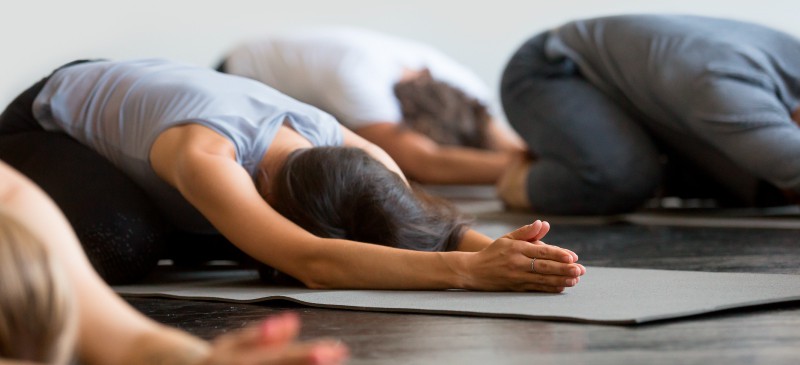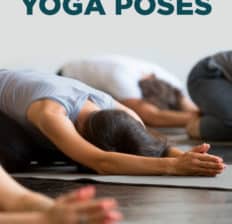This Dr. Axe content is medically reviewed or fact checked to ensure factually accurate information.
With strict editorial sourcing guidelines, we only link to academic research institutions, reputable media sites and, when research is available, medically peer-reviewed studies. Note that the numbers in parentheses (1, 2, etc.) are clickable links to these studies.
The information in our articles is NOT intended to replace a one-on-one relationship with a qualified health care professional and is not intended as medical advice.
This article is based on scientific evidence, written by experts and fact checked by our trained editorial staff. Note that the numbers in parentheses (1, 2, etc.) are clickable links to medically peer-reviewed studies.
Our team includes licensed nutritionists and dietitians, certified health education specialists, as well as certified strength and conditioning specialists, personal trainers and corrective exercise specialists. Our team aims to be not only thorough with its research, but also objective and unbiased.
The information in our articles is NOT intended to replace a one-on-one relationship with a qualified health care professional and is not intended as medical advice.
What Is Restorative Yoga? Benefits, Poses and How to Do It
July 12, 2022

While it might not be as physically challenging as other types of yoga, such as Ashtanga or Bikram yoga, restorative yoga can still have big payoffs in terms of promoting overall health.
It doesn’t exactly “count as exercise,“ but thanks to how restorative yoga supports your nervous system, it can be a rejuvenating practice that improves your sleep and energy, while also helping you stretch and decompress.
So what is restorative yoga exactly, and what is the difference between “regular yoga” and restorative yoga? Let’s find out.
What Is Restorative Yoga?
One definition of restorative yoga (RY) is “a type of yoga known for its relaxing, calming and healing effects.” It involves holding poses for relatively long periods of time, often with the help from props, such as blankets, bolsters and blocks, that help support your body so you can relax.
What is the purpose of restorative yoga?
Promoting relaxation, decreasing symptoms tied to stress, and building a body and mind connection are the most common reasons that people practice this form of yoga.
Holding restorative poses is a simple way to allow your body and mind to reach a calmer, more present place.
How is it done?
In restorative yoga classes you can expect to hold basic yoga poses for five or more minutes using help from props. A few basic props, such as blankets and pillows, make it easier to comfortably stay in a fixed position for a longer period of time.
RY practice is all about slowing down, practicing stillness, relaxing your muscles and being quiet. This makes it very different than faster-paced practices that are intended to increased your heart rate, build strength and balance, and tone your muscles.
Is restorative yoga good for beginners?
Yes, considering it’s pretty simple to do and one of the slowest-paced yoga practices.
It doesn’t involve any predetermined sequence that must be learned, and it’s suitable for people who don’t consider themselves to be very flexible or fit.
For those new to the practice, it’s recommended that you attend classes led by instructors or watch videos online in order to have the best experience.
What’s the history behind it?
RY has roots in the teachings of B.K.S. Iyengar, a well-known teacher who developed different yoga practices for students of varying levels of fitness, including those who desired a form of yoga that wouldn’t contribute to injuries, straining or pain.
One student of Iyengar’s, Judith Lasater, is also credited with popularizing restorative yoga in the West during the 1970s.
Health Benefits
1. Can Help You Cope With Stress
Like other types of yoga, restorative yoga benefits include helping build resilience to stress and promoting deep relaxation.
For people leading stressful, modern lifestyles, slowing down to rest, stretch and breathe can promote parasympathetic nervous system activity, which helps take the body out of a “fight or flight” response.
The parasympathetic nervous system (PNS) is a branch of our autonomic nervous system that controls involuntary functions in the body, such as heart rate, pupil dilation and so on. By stimulating the PNS, you help your body “rest, digest and restore.” This allows you to help slow your heart rate, normalize blood pressure, relax your digestive system and release muscular tension.
Studies suggest that RY may be especially beneficial for anyone who experiences:
- anxiety symptoms
- depression
- occupational stress (such as those working night shifts)
- trauma-like symptoms
- insomnia
- tension headaches
- ongoing digestive issues
- pain tied to chronic stress
RY practice can help address the root of these issues by decreasing release of stress hormones, such as cortisol and adrenaline, which when left unchecked can contribute to dysfunction of the immune system, reproductive system, cardiovascular system and so on.
2. Supports Cardiovascular Health
Because research shows that RY can reduce the negative effects of stress on the body, it may help defend against metabolic changes, including abdominal obesity, high triglycerides, low HDL-cholesterol, hypertension and hyperglycemia.
3. May Improve Your Sleep and Energy
If you have trouble falling asleep due to feeling worried, tense or wired, a restorative yoga practice before bed may help you doze off more easily.
RY has been shown in certain studies to help decrease fatigue among people with mental health problems and serious illnesses, such as cancer, while improving emotional well-being.
By deepening your breath and slowing your heart rate, you’ll feel calmer and more able to rest when needed or to drift off to sleep more easily. In this way, RY has similarities to a body scan meditation or yoga nidra practice.
Try practicing RY in very dim light and/or wearing an eye mask while listening to a meditation or calming music. This is great for putting your body into a state of deep relaxation that’s needed for restful sleep.
4. Suitable for People With Injuries or Who Are Recovering
While some types of yoga can be difficult for people overcoming injuries or illnesses, restorative yoga classes are suitable for a wide audience. RY is even a good fit for people who struggle to lower themselves to the ground and stand back up easily, as well as those with fatigue and side effects from treatments, such as for cancer.
The use of props, including bolsters and chairs, can also make it easier to get into poses that may otherwise not be comfortable.
5. Stretches the Body and May Boost Flexibility
RY practice can be helpful for gently stretching tense parts of the body, such as the hips, shoulders, neck and lower back.
Blankets, blocks and other props can help fill the gaps in between the floor and your body, allowing your muscles to rest and stretch slowly. This is especially helpful for preventing straining in sensitive areas, such as the neck, hamstrings or pelvic area.
Studies suggest that you’re most likely to experience body and mind benefits from RY if you actually gently stretch during the practice, so if possible try to take advantage of the props to improve your flexibility.
6. Can Help Manage Pain
RY may help people who experience chronic pain by decreasing stress, which can worsen inflammation and muscular tension.
A 2020 study found that among adults with chronic pain, two one-hour RY classes led to reductions in pain and improvements in energy and social functioning.
A separate 2019 study demonstrated that yoga participants with arthritis were significantly more likely to work full-time, less likely to be unable to work due to disability and had better physical function.
7. Encourages More Self-Care and Healthier Habits
Can restorative yoga help you lose weight? While it won’t necessarily burn lots of calories or make you sweat, it may indirectly help you to reach a healthier weight by addressing stress in your life.
Unmanaged stress is known to affect your appetite and can lead to weight gain by increasing cravings, lowering your energy and contributing to emotional eating.
According to one study, “One of the main goals of yoga is to achieve tranquility of the mind and create a sense of well-being, feelings of relaxation, improved self-confidence, improved efficiency, increased attentiveness, lowered irritability, and an optimistic outlook on life.”
Self-care practices, including RY, can support a generally healthier mindset and may make it more likely that you’ll sleep better, eat better and have more energy for exercise. For example, yoga has been shown to serve as a form of mindfulness, which can improve general well-being.
One study even found evidence that restorative yoga was slightly better than stretching for improving fasting glucose and supporting general metabolic health. Another study concluded that “restorative yoga was a feasible and acceptable intervention in overweight adults with metabolic syndrome.”
Poses to Try
Postures that are included in typical restorative yoga classes include chest openers, twists, hip openers, seated forward folds and gentle backbends.
New to RY and ready to give it a try? Here are some basic restorative yoga poses to begin with:
1. Child’s Pose
Suggested props: 1 bolster or 2 folded blankets
Start by sitting on your heels with your knees bent and mat distance apart. Lean forward until your belly comfortably rests between your thighs.
Place a bolster or folded blanket between your thighs for extra support. Try to lay your forehead on the bolster while you extend your arms straight out in front or resting next to your body.
Relax as much as possible as you breathe. Hold for five to 10 minutes. (For the best results, stay in each posture below for at least this duration.)
2. Reclining Bound Angle Pose
Suggested props: 2 blocks, 3 blankets or 1 large bolster, 1 strap
Place a block on its medium height at the top of the mat and another on its lowest height below it. Lay your bolster lengthwise over the two blocks, and place a folded blanket at the top of the bolster.
Create a loop with your strap, and step your feet into the center of the loop, holding the straps in your hand. Bring the soles of the feet together, and open the knees.
Place rolled blankets underneath the outside of your legs for support as you let your hips open. Lower your spine onto the bolster, and have your head resting back on the block and blankets.
Relax your shoulder blades, breathe deeply and hold for three to five minutes.
3. Supine Spinal Twist
Suggested props: 2 bolsters or folded blankets
Lay down on your back, pull your right knee up to your chest, place your left hand on the right knee, and pull the knee up and over the body to the left. You should feel a gentle twist through your torso, but try to keep both shoulders on the mat.
Place a bolster or two under the lifted knee if this helps you feel more comfortable. Breathe deeply, and hold for about five minutes. Then repeat on the other side.
4. Supported Bridge Pose
Suggested props: 1 block, 1 blanket
Lie down on your mat, bend your knees and place your feet on the mat directly under your knees, about hips-width apart. Press your feet firmly into the mat, and lift your hips.
Slide a block on low or medium height underneath your lower back, and lower your hips on the block for support. Lower the arms by your sides, and breathe deeply. Hold for about five minutes.
5. Supported Forward Fold
Suggested props: 1 bolster, 1 blanket rolled up
Sit on your map with your legs straight out in front of you. Bend your knees slightly, and place a bolster or a rolled blanket under your knees.
Place another bolster on your thighs, and gently fold onto the bolsters, allowing your belly to relax onto it for support as you hinge at your hips. Breathe and hold for about five to 10 minutes.
6. Legs Up the Wall Pose (or “Legs Over a Chair”)
Suggested props: 1 blanket
Start by laying down on your mat facing toward a wall with your hips about six inches away from the wall. Lift your legs up onto the wall while you keep your shoulders and head down on the mat.
Allow your feet to rest against the wall as your legs and belly release. Place a blanket under your hips for extra support if it feels comfortable. Hold for five to 10 minutes.
Now that you know which poses to get started with, here are other tips for making the most of your practice:
- Find somewhere quiet and dimly lit to practice that is free of clutter and distractions.
- Dress in comfortable clothes, and make sure you’re not too warm or cold. Keep in mind that you may be under blankets, which can help you stay warm.
- If you’re practicing at night, consider using an eye pillow to cover your eyes.
- If you own a weighted blanket, try using it over your chest and torso to help you feel grounded and safe. A heavy blanket or pillow can also work well.
- Aim to practice for anywhere between 15 and 60 minutes. If practicing alone, setting a timer can help you unwind so you’re not worried about falling asleep.
- Breath deeply throughout the practice as you imagine yourself letting go and experiencing healing.
What to Expect in a Class
What are restorative yoga classes like? During a class in which you go through a typical restorative yoga sequence, you’ll hold each pose for about five to 10 minutes. Most classes only include about five or six poses, since you’ll spent considerable time relaxing into each one.
The goal is to unwind and release tension in your body as much as possible. While resting in a posture, focus on exerting as little physical effort as possible. To do this, imagine your muscles melting, and try to let go of any gripping or straining.
Props can really come in handy while resting in restorative yoga postures because they allow your body to let go. Using bolsters, blankets, blocks and belts is encouraged if it helps you feel more comfortable.
Most classes do not involve any chanting or heavy breathing, however soothing music, sound bowls or instruments, such as harmoniums, may be utilized by some teachers. Some teachers also combine restorative yoga poses with guided meditations.
If you rather not attend an in-person class, consider following a class for free on YouTube. The great thing about this style of yoga is that it can be done anywhere, and you can improvise and use props you have at home, such as regular pillows and blankets.
Risks and Side Effects
Generally speaking, restorative yoga poses are very safe, even for those with injuries and limitations. Compared to other forms of yoga, this style is very unlikely to cause yoga injuries and in fact may help soothe tense areas of the body that are in pain.
That said, if you find yourself straining or feeling pain while practicing, try gently coming out of the posture, moving around a bit and then trying again if you’d like, perhaps with use of another prop for extra support. Remember to keep breathing and to pay attention to your body and senses, rather than getting up in your thoughts.
Conclusion
- Restorative yoga is “a type of yoga known for its relaxing, calming and healing effects.” It involves holding poses for about five to 10 minutes, often with the help from props, such as blankets, bolsters and blocks, that help support your body so you can relax.
- What are the benefits of restorative yoga? It can help gently stretch the body, promote deep relaxation, manage anxiety, assist in improving sleep, decrease tightness/tension and reduce pain.
- A typical restorative yoga sequence lasts between 20 and 60 minutes and only involves about five to six poses.
- RY is great for beginners as well as those who have limitations and injuries. It may be especially beneficial for anyone dealing with anxiety symptoms, insomnia, tension headaches, ongoing digestive issues or pain.





